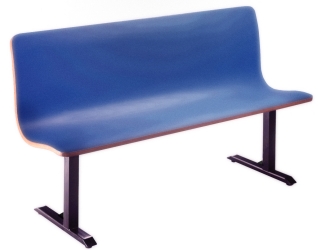Steal This Drill: Grab a Bench for Better Depth
 Thursday, January 26, 2012 at 12:25PM
Thursday, January 26, 2012 at 12:25PM  CAtennis
CAtennis  Again, much gratitude is due to Roy Coopersmith for suggesting the following drill. The purpose of this drill is to improve the depth of one's groundstrokes. One way to do this would be to place a broomstick or PVC pipe through, or, conversely, an Airzone Training System over the net. This forces the player to aim considerably higher than the net thereby increasing the player's margin for error in a match.
Again, much gratitude is due to Roy Coopersmith for suggesting the following drill. The purpose of this drill is to improve the depth of one's groundstrokes. One way to do this would be to place a broomstick or PVC pipe through, or, conversely, an Airzone Training System over the net. This forces the player to aim considerably higher than the net thereby increasing the player's margin for error in a match.
However, one problem with relying strictly on an above-the-net device is that players tend to limit their shots to height while not improving their depth. In other words, there's a risk that the player will develop high, loopy shots that bounce mid-court (and can be easy sitters for the opponent). The goal for a tennis player is to hit high over the net but to also have deep, penetrating shots that put the opponent in a defensive position (or, at least, a position from which they are unable to hurt you). As previously discussed, one of the main strategies in tennis is to hit the ball deep in order to (a) put the opponent in a defensive position and force him to expend his own energy to give pace to the ball; (b) cut down on the angles that he may be able to hit; and (c) put yurself in the best position to control time and space. In order to develop depth, it's not enough to hit the ball high or hard; it's finding the middle ground where you're staying away from the net but also hitting just inside the baseline.
You can develop this comfort zone my placing a plastic bench (chair or pee-wee tennis net) on or around the practice partner's service line (or on both sides of the court - for both players to practice). The players will then rally (baseline points) OVER the net as well as the bench. This simple exercise forces the players to hit not only high, but penetrating shots that explode off the court. Once the players master this drill, they can alternate rallies where one player hits 5-10 deep shots and then a short angle. Doing so would teach the players how to be flexible with their thinking: push the opponent deep; then yank her side-to-side with sharp angles.




